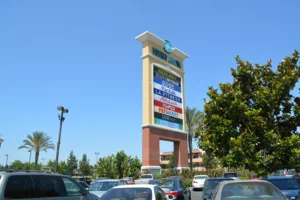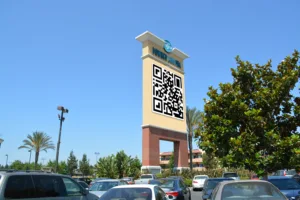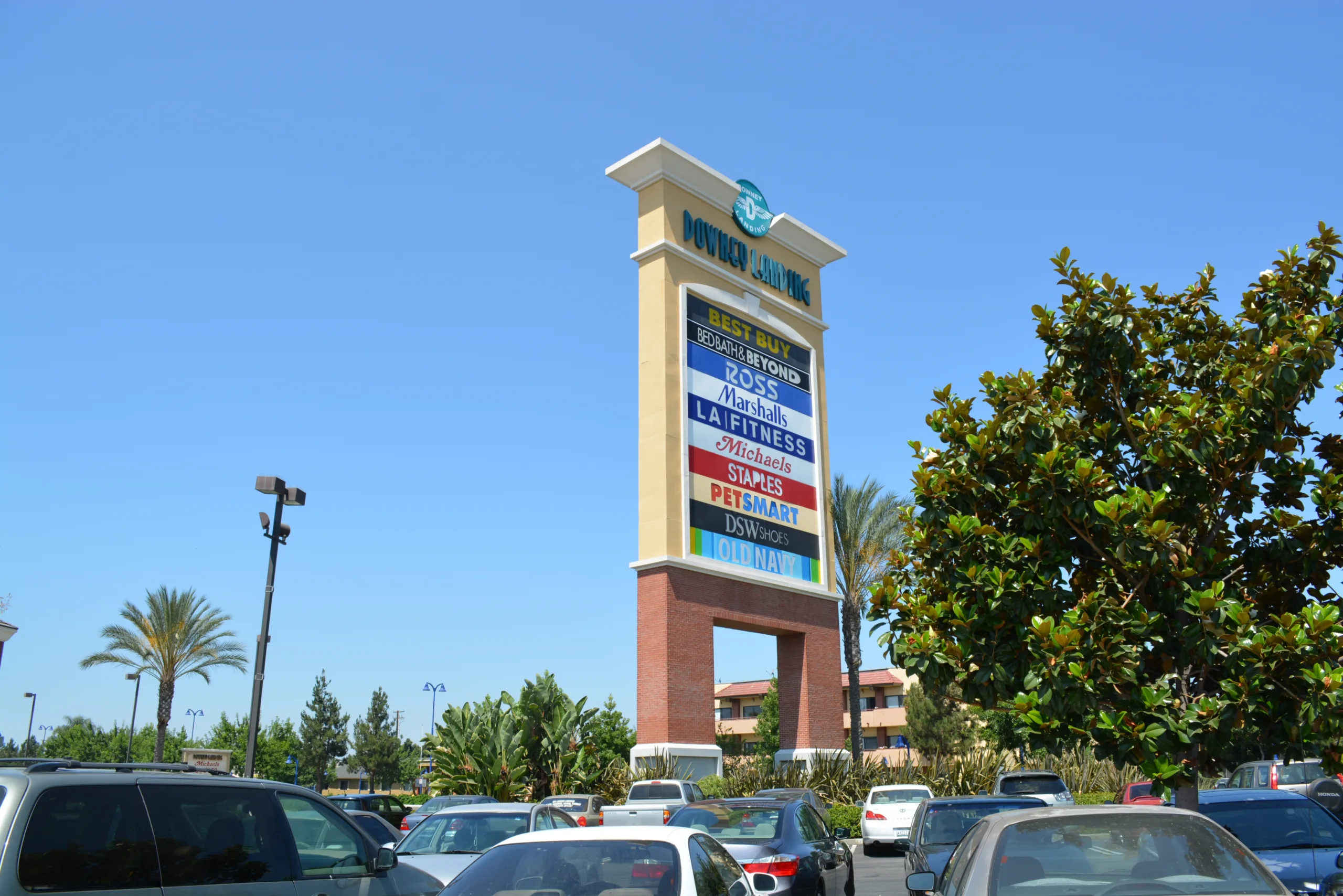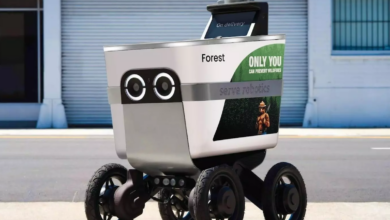Some industries have been forced down paths they never intended as a result of the changes in technology and in how we operate our businesses and our personal lives. Some of these include:
- Travel agents
- Beta/VHS/Blue-ray developers
- Paper envelope and stationary makers
- Book publishing (in some areas)
- Newsprint industry
Yet, some old-school services are actually blossoming within this new age, such as:
- The cardboard industry
- Packaging engineers
- Foam peanuts and plastic bag manufacturing
- Clear acrylic manufacturing
Let’s look at a subject I bet you have never really looked at, or even considered. Take this ride with me as I put on my Nostradamus cowboy hat and take a serious look at the old way and the new way we find an address, a building, a store, or a location.
We don’t do it like we did 10 years ago or 20 years ago, yet we are still making and deploying signs in the same way we did before our smartphones existed.
It may be time to re-evaluate how the map/phone process affects the signage that businesses purchase: their size, location, and basically their all-around purpose for existing.
Is there still the need for a huge structure with a smaller tenant sign that provides as much advertising awareness as a kid on the corner with a spinner sign? In reality, tenant panels provide that tenant about 3 or 4 square feet of visual communication and awareness — at a distance that is typically never given much consideration by the average sign shop, or landlord.
In all my years in the industry, I have always struggled with the real value of a tenant panel.
The tenant panel has always seemed to me like a bone thrown to the other businesses by the anchor store. The term anchor means it’s the anchor for all of the tenants to use so that their business can be found.
Tenant signs feel like a little, “Here you go, you can put this cute little bumper sticker on the provided sign box that’s dwarfed by the gigantic SEARS sign that dominates the structure … enjoy!”
It is what it is, and municipal sign codes have already put the handcuffs on tenant signage — as we all know so well — so really, the whole idea of the traditional tenant-panel cabinet sign is probably not what a landlord (nor a sign shop) should be offering its tenants.
To further beat my point into the ground, let me toss you a hypothetical situation: Suppose it’s 1985-ish, and you are given the directive to meet someone at a job site. Back then, if you can remember that far back, the conversation might have gone something like this:
“… Um, one more thing. Tom said to meet him at the new job site, not the old one …”
“It’s out south at 3474 Sunburn Boulevard. Write that down! Take your map; use one of the newer maps Tom got from AAA, and don’t forget to bring some change for the payphone, just in case you need it.”
“Tom said it’s between the car dealership and the Toot-N-Moo — so look for the dirt mounds! Use the construction traffic entrance and follow the signs, but don’t go to the right; stay to the left – it wraps around, so stay on this dirt road until you see the red shop trailer, then drive around back to the site where the hole is being dug.”

If you are old enough to recall this time in our world, the way we located places was with maps. With those maps, we relied upon visual landmarks. Toot-N-Moo, the dirt mounds, and the car dealership were those landmarks back then.
Sometimes you were lucky, like in locating a mall, for instance. The tall landmarks were 50’ pylon or monument signs that let you know, from a half mile away, that the mall you are looking for is straight ahead.
Since malls were invented, the “anchor tenant” sign was huge and used as the identifier of the property. “We’re located in the Sears Mall.”
However, even when you found the property, you then had to confirm that the business was still located there. “Did it move, or is it open yet?” (You forgot to call before you left the shop, cell phones weren’t widespread, and the ones that existed were bigger than bricks.) So rather than stopping at a payphone to call the store, you look around for the tenant panel sign you saw that was located on the tall pylon sign. There, just under the big SEARS sign, was the 12″ tall x 36″ long tenant panel sign that told you for sure that the business you seek is, in fact, in this mall. No hours posted, but you’ll just have to take a chance.
Now, the big question is where to park so that you don’t end up walking the entire mall property to get to the store. Hopefully, you will find an entrance sign or some markings on the outside of the mall to let you know that the store you seek is just beyond those doors.
It was all about having a great memory and knowing where to look to find the signs you needed to navigate a large property such as a business park. Or maybe you were trying to locate a home address that’s buried deep in one of those “urban sprawl neighborhood maze” experiments of the ’60s. You lived with a map in your car. Period.
Maps have all been converted to digital apps, which makes using a map app not only easier but safer and more accurate 97.38% of the time. (Don’t check my math. This is a presumption I made, myself, without actual research.)
Today, if the same driving directive was given, the conversation would be something more along these lines:
“… Um, one more thing. Tom said to meet him at the job site. Check your phone — he sent you a map link in a text message.”
Done. The link will open up a map application that we only need to follow, and it will take us to the exact spot we are looking for. It will even notice that we have parked, and that we are now walking, and it will walk us to the front door of the place we seek.
So, where is the usefulness of the panel tenet sign?
This inequity may be, for the sign industry, the next big opportunity to provide tenants more than they could have ever imagined from their tenant listing. Here is how it can happen easily and profitably for sign shops that get on this bandwagon early.
The customer uses their phone to get to the store’s front door (as in not looking up other than to navigate stairs and open doors). So, how much influence did the tenant panel signs on that big whatchamacallit in the parking lot have on anyone other than old sign dogs like me who always look at signs and pay attention to who isn’t looking at them.

A sign has a purpose. It makes no sense to put a huge sign out front of a mall or other venue that’s designed to attract visual attention from distant viewers. Smaller and different would be a more effective sign.
Will the core purpose of the outdoor tenant panel sign (used at shopping centers and office parks) suffer a similar fate as the DVD, VCR or the travel agency?
Today, your partner tells you about the new store across town that has a limited number of plastic pools in stock, and your daughter must have it for the summer. Your partner has already ordered and paid for it; all you have to do is pick it up.
So, to make it easy for you, a text is sent with a link to a map that will give you turn-by-turn and step-by-step directions right to the front door of the store.
What role does a gigantic monument sign and tenant panel sign perform in today’s world of electronic navigational assistance?
The big change came with our behavior that was redefined by technology that is always inches from our hands. Along with that automatic “drag your car to any location, anywhere at any time” map app driven by satellites and GPS technologies.
Do you think your Uber driver uses those tenant signs to reach your destination successfully?
I am wondering if the entire concept of catering to the impulsive whims of people in traffic is a worthwhile idea anymore.
If your sign client’s company isn’t a frequent stop for impulse purchasing anyway, how do you justify the expense of a sign made obsolete by phone directions?
How does online shopping change the need for certain types of signage?

How often do you overlook signage only to find yourself someplace you didn’t intend to go? So, you rely on your phone, right? When lost customers can’t find your location, they say, “Damn it, they need bigger signs” or, “Stupid app, took me to the wrong door.” These are signage problems that traditional tenant signage was never meant to address.
How do we educate our customers on investing in their marketing effectively to make it easier for people to find them?
I am not saying “no signs” or that signs are obsolete; I am saying that now, more than ever, signs must be well-planned and thought through so that the old-school mistakes are not being carried over into our current, new store locating processes.
I won’t even mention the fact that online shopping and free delivery eliminates the need for the customer to go anywhere.
Yep, it’s scary, but it’s also a great opportunity to revisit every single shopping mall and other enterprises that have depended upon traditional signage.
You have lots of opportunities for new, different QR code-based signage. It’s not about eliminating signs; it’s about redefining them to do more in smaller, targeted places.





